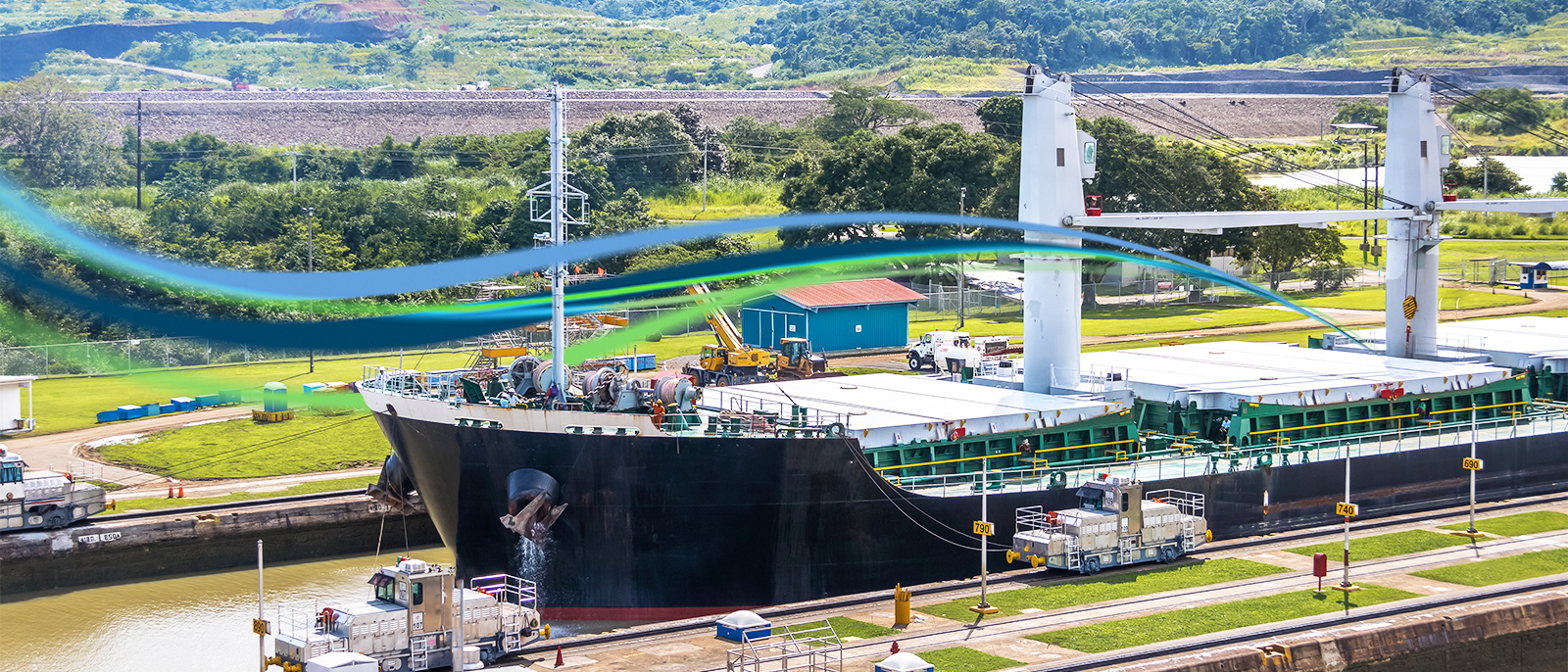The Panama Canal has long been one of the world’s most important trade arteries, allowing ships to pass efficiently between the Pacific and Atlantic Oceans. Handling over 14,000 vessels each year, it connects Asia with the eastern seaboard of the Americas and facilitates trade between Europe, South America, and beyond.
In 2025, prolonged drought conditions, worsened by El Niño weather patterns, have created the most severe water shortages in the canal’s modern history. In response, the Panama Canal Authority (ACP) has imposed strict transit and draft restrictions, reshaping shipping flows and triggering a chain reaction across the supply chain. Costs are rising, transit times are lengthening, and trade routes are being reconfigured.
Why the Canal’s Challenges Matter:
The canal allows vessels to avoid the long journey around Cape Horn at the southern tip of South America — a detour adding more than 8,000 nautical miles and up to three weeks of sailing. When capacity is reduced or vessel sizes are restricted, the consequences are felt globally. Container shipping faces schedule disruptions and congestion at alternative gateways. Bulk commodities such as grain, coal, and fertilisers become more expensive to transport, while LNG and crude oil shipments are rerouted, adding volatility to energy markets. Even modest restrictions can cause significant disruption.
Current Restrictions in Effect:
By mid-2025, the ACP had reduced daily transits from 36–38 ships to around 22–24, creating bottlenecks for vessels without booking slots. Draft limits for Neo-Panamax vessels have been cut to 13.4 metres (44 feet), forcing some ships to carry lighter loads. Vessels arriving without reservations may face anchorage delays of a week or more, while carriers with long-term agreements or higher toll payments are being given priority. These restrictions are likely to remain in place until heavy rainfall replenishes the canal’s reservoirs — a process that could take many months.
How Global Shipping Is Adapting:
To manage the disruption, many Asia–U.S. East Coast services are now using the Suez Canal, adding 10–14 days to voyages but avoiding Panama’s congestion. Some carriers are increasing calls at U.S. West Coast ports and moving cargo eastward by rail, which shortens sailing time compared to the Suez route but requires careful inland logistics planning. Smaller vessels are being deployed to maintain cargo density under draft restrictions. Transshipment hubs in Colombia, the Caribbean, and Mexico are enabling partial unloading and reloading, allowing vessels to pass through with reduced drafts. For urgent or high-value cargo, some shippers are shifting to air freight despite higher costs.
Implications for Shippers and Forwarders:
The restrictions are pushing freight rates up through longer voyages, fuel surcharges, and transshipment fees. Extended transit times are forcing changes to inventory planning and replenishment cycles, while reduced transit capacity means less available space during peak periods. Relying on alternative routes also increases exposure to risks from weather events, political instability, and infrastructure problems elsewhere.
Strategies to Stay Ahead:
Companies are responding by diversifying their routes and transport modes, securing bookings early to guarantee space, and working closely with logistics partners who have strong relationships with carriers and port authorities. Investment in real-time tracking tools improves visibility, allowing better communication with customers and suppliers. Reviewing service contracts to include flexibility for route changes, cost adjustments, and transit time variations can provide vital resilience during disruption.
Looking to the Future:
The 2025 Panama Canal restrictions highlight how climate-related risks can directly affect global trade infrastructure. Longer-term solutions — such as water conservation measures, expanded reservoirs, and updated slot management systems — are being considered by the ACP. For shippers and freight forwarders, adaptability will remain a competitive advantage. Those who invest in flexible routing, visibility, and strong partnerships will be best positioned to navigate the challenges ahead.
If we can help you, please contact us.
